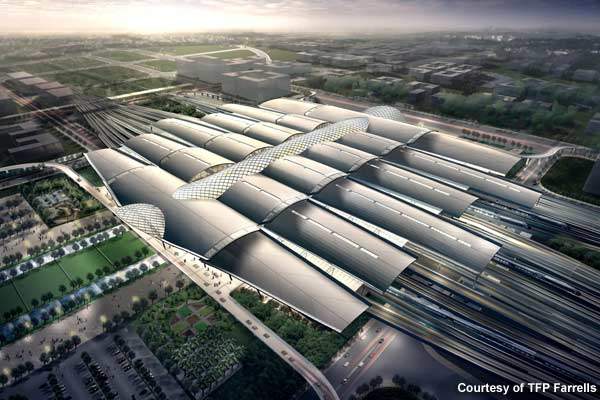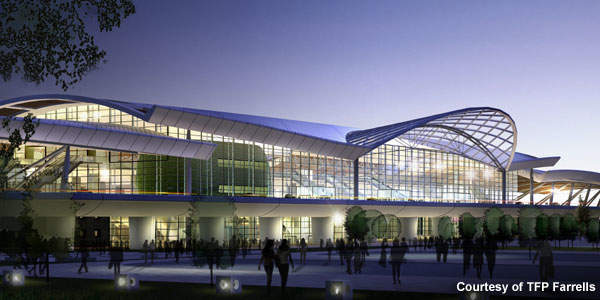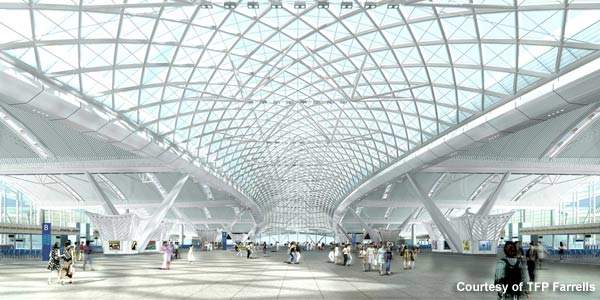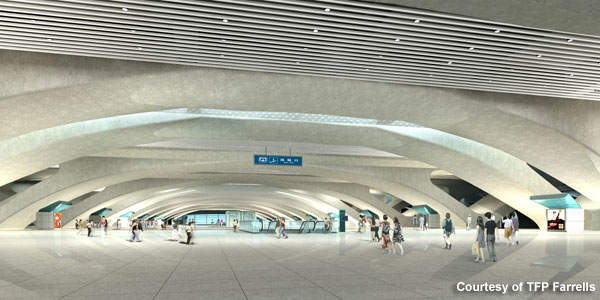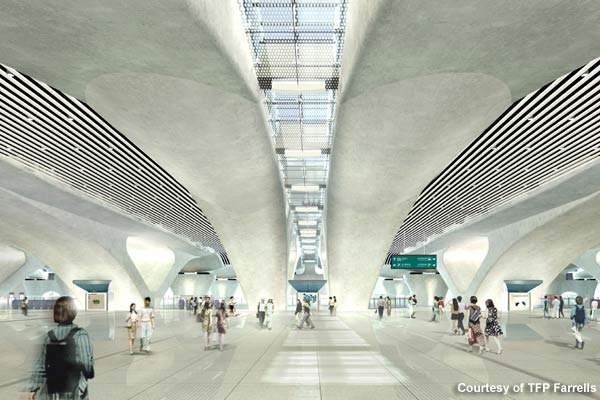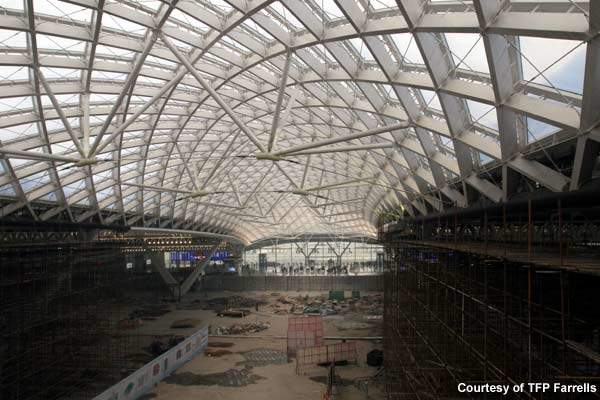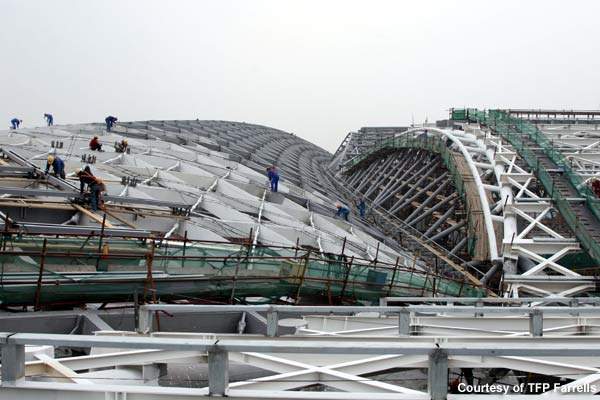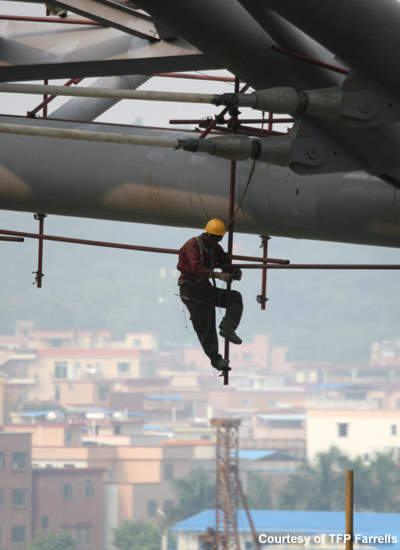The Guangzhou south railway station is located in Shibi Town in the Panyu district of Guangzhou, capital of the Guangdong province, at the heart of the Pearl River Delta. The new railway station is being built at a total cost of $1.8bn. The first phase of the project was completed in January 2010 and the complete railway station is scheduled to open in July 2010.
The station will enable Guangzhou to become one of the largest transportation hubs in China. It will integrate different transportation modes such as railway trunk lines, intercity rail, highways, urban roads, public buses, taxis and cars.
Upon completion, the station will be four times larger than the existing railway stations and will be capable of handling 200,000 passengers per day. It is estimated that by 2030 the station will be able to handle 300,000 passengers daily. The maximum capacity of the station is 112 million passengers per year.
Guangzhou south railway station history
The existing railway stations in Guangzhou are overloaded and unable to meet the growing demands of the city. To increase the passenger handling capacity, the decision to replace an older railway station was made by the provincial government of Guangdong in 2004. Subsequently, the construction of the new railway station commenced in March 2007.
South railway station location and layout
With the opening of the new railway station, the total number of stations in Guangzhou will increase to four. The other three stations in the city are Guangzhou north railway station, Guangzhou railway station and Guangzhou east railway station.
Spread over an area of 486,000m², the south railway station is 590m long and 350m wide. With 28 elevated island platforms spread over five floors, it is the largest railway station in Asia.
Around 78,900t of steel has been used to construct the station. The railway station features three underground metro lines and a concourse at the basement level.
The station features three stories with a mezzanine floor for food and beverage outlets, and two for metro, car parks and services. Atrium spaces on both ends of the station are situated at the main drop-off entrances. The atriums connect the elevated departure concourse platforms and waiting hall with the ground-level arrivals hall.
Train arrivals are at ground level and connected to other transport modes such as the underground metro. Train departures are from an elevated concourse. The 28 elevated viaduct platforms for high-speed trains are located between the departure concourse level and the arrival level.
Guangzhou south railway station design and construction
The structural engineers for the project are Schlaich Bergermann, Beratende Ingenieure and the Beijing Institute of Architectural Design. Atkins Consultants (Shenzhen) is the station pedestrian and traffic engineer.
The fire engineer is Ove Arup & Partners (Shenzhen), and the acoustic and environmental engineer is Tsinghua University’s school of architecture. Fourth Railway Survey & Design Institute and the Beijing Institute of Architectural Design are the services engineers for the project.
TFP Farrells, based in UK, was awarded the contract to design the new railway station. The company designed the station in collaboration with China’s Fourth Railway Survey and Design Institute and the Beijing Institute of Architectural Design.
The design of the railway station is inspired by traditional Guangdong-style architecture. The roof is in the form of banana leaves and includes longitudinal skylights to allow maximum daylight into the station. It provides partial enclosure to the open-sided platforms to allow fresh air to circulate in the station. Both ends of the roof are curved to shield the railway station from wind and to reduce uplift during passage of trains.
A central spine cuts across the roof to connect the east and west ends of the railway station. With a span of 68m, enabling waiting rooms on the upper level to be built without columns, the central spine widens at the entrances and is narrow at the centre with a canopy placed on either end. The shape of the central spine is in sync with the circulation route of the station below and doubles as a route finder.
TFP Farrells incorporated several environmental friendly features in the railway station. The design of the station allows natural ventilation and reduces the need for air conditioning and artificial lighting. Photovoltaic cells are equipped in the station to produce solar energy. TFP’s design has allowances for the future expansion of the station to increase its passenger-handling capacity.
Railway station services
The new railway station will enable passengers arriving at Guangzhou to travel to different cities in the Pearl River Delta. It will be the origin and terminal point for Guangzhou-Kowloon, Guangzhou-Shenzhen, Guangzhou-Foshan and Guangzhou-Maoming railway networks.
Serving the lines 2, 7 and 12 planned in the Guangzhou Metro project, the railway station will also serve the planned Guangzhou-Zhuhai and Guangzhou-Wuhan railway lines.
The station will link the region to Hong Kong and Macau through light rail, metro and expressway networks.
Guangzhou railway station facilities
The passenger facilities in the new station include food and beverage outlets located on the mezzanine floor. The departures hall features spacious waiting rooms apart from food and beverage outlets. A 1,900 capacity parking lot is available. A total of 152 bus lots and 60 taxi pick-up stations are also part of the new railway station.

